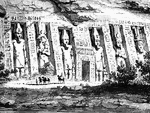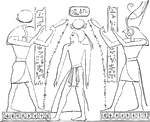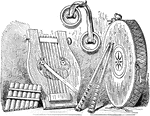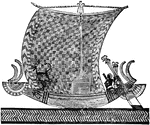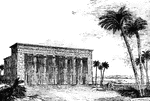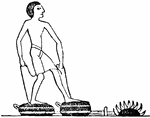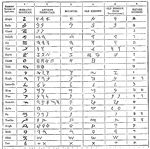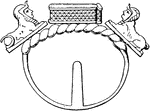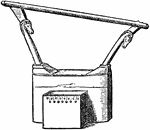Mummy
The bodies of those who were buried in the pyramids were preserved from decay by a secret process, known…

Lotus
A name derived from the lotus of Greek legend, and applied to various species of plants related to the…
Winged-Globe Design
An Egyptian design consisting of a small ball, on the sides of which are two asps with extended wings,…
Column
"Columns are largely employed in the architecture of Egyptian temples. They are of various forms." —D'Anvers,…
Column
"Columns are largely employed in the architecture of Egyptian temples. They are of various forms." —D'Anvers,…

Pillar and beam
"Columns are largely employed in the architecture of Egyptian temples. They are of various forms." —D'Anvers,…

Egyptian statue
"Egyptian Statue in black basalt. Heroic size, in the British Museum." —D'Anvers, 1895
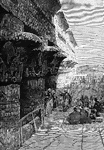
Egyptian Temple
Sleep temples are regarded by some as an early instance of hypnosis over 4000 years ago, under the influence…
Egyptian Music
This illustration shows harps, pipe, and flute, from an ancient tomb near the Pyramids.

Ancient Egyptian Music
This image shows a group of ancient egyptian street musicians. (1) Woman with a tall light harp with…
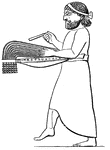
Ancient Percussion
There are several instances of some sort of ancient instrument, consisting of metallic plates or rods,…
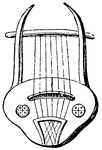
Lyre
A stringed instrument well known for its use in Classical Antiquity. It was used mainly by the Ancient…

Scandinavian Ludr
A large bronze horn in a curious shape. These instruments have been tested by experienced horn players…

Bass Viol
The viol is a family or musical instruments and is related to and descending from the vihuela and rebec.
Ramses II
An Egyptian pharaoh of the nineteenth dynasty. He was born ca. 1302 BC and reigned from either 1279…

Globe
An illustration with multiple instruments used for navigation. These items include a globe, compass,…
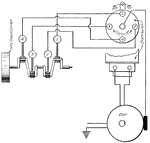
Meo Magneto
Spark advance with Meo Magneto. With clockwise instruments, position 1 supplied advanced spark, position…
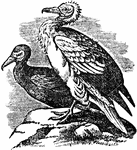
Egyptian Vulture
"One of the smaller Vulturidae, of a genus differing from the true vultures in the slender bill, which…

Transit Instrument
"One of the most important of astronomical instruments, consists of a telescope fixed to a horizontal…
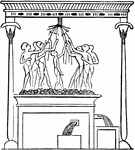
Wine-press
"An Ancient Egyptian Wine-press. The process of treading, which seems to have prevailed from the earliest…

Thebes
"Figures sculptured in one of the tombs discovered by Belzoni, near Thebes, which represent captives…

Hot-wire Ammeter
"Hot-wire instruments working on the sag principle can be used in any position if properly contructed,…
Sulphurator
"Sulphurators are instruments for distributing flowers of sulphur, for the purpose of destroying mildew.…

Epps's Sulphurator
"Sulphurators are instruments for distributing flowers of sulphur, for the purpose of destroying mildew.…

Anubus
"An Egyptian deity, styled Anepu on hieroglyphic monuments, was, according to mythology, the son of…

Elliptical Arch
"Upright elliptical arch, sometimes called the egg-shaped arch, employed in Egyptian and Sassanian architecture."…
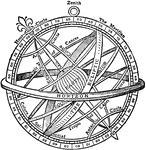
Armilla
"Armillary Sphere, an instrument used in astronomy. In its simplest form, consisting of a ring fixed…

Vulture Skeleton
"Skeleton of Egyptian Vulture. (Neophron percnopterus), to show bones of bird. a, post-orbital process;…
Egyptian Charm
"A small porcelain cylinder ornamented with interlaced lotus flowers in intaglio, having a ring for…
Egyptian Chain
"A gold chain is formed of wires closely plaited and very flexible, the ends terminating in the heads…

Signet Ring
"A signet ring has a square revolving bezel on which are four serpents interlaced." —The Encyclopedia…
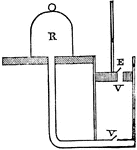
Air Pump
"The air pump is an engine by which the air can be pumped out of a vessel, or withdrawn from it. The…

Kew Instruments
"Kew Instruments arranged in the relative positions recommended by Lloyd so as magnetically to interfere…



